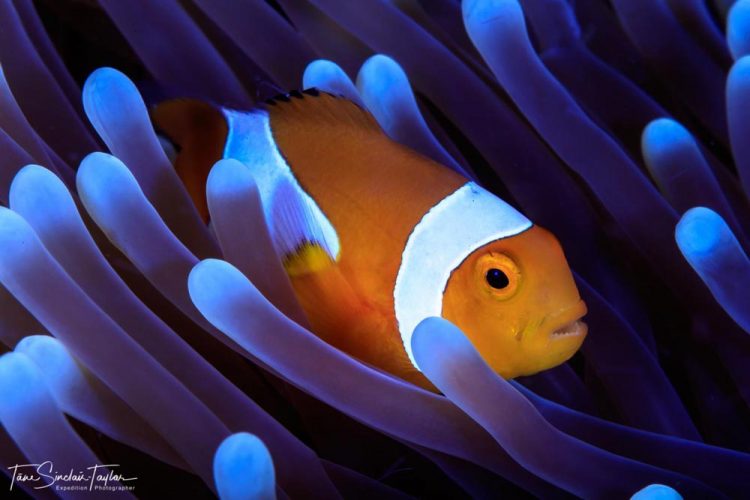Finding Nemo's genes

The orange clownfish (Amphiprion percula) is one of the most important species for studying the ecology and evolution of coral reef fishes. Credit: Tane Sinclair-Taylor Usage Restrictions: Image reproduction is approved by copyright holder for promotion of this article and with correct attribution, as listed.
An international team of researchers has mapped Nemo's genome, providing the research community with an invaluable resource to decode the response of fish to environmental changes, including climate change.
In a breakthrough study led by the King Abdullah University of Science and Technology (KAUST) and the ARC Centre of Excellence for Coral Reef Studies (Coral CoE), researchers used high-tech sequencing tools to create one of the most complete genetic maps for the orange clownfish, a common reef inhabitant and star of the Disney movie, Finding Nemo.
“This genome provides an essential blueprint for understanding every aspect of the reef fish's biology,” said lead author Dr Robert Lehmann of KAUST in Saudi Arabia.
“It contains 26,597 protein coding genes. And like the world's largest jigsaw puzzle, it took patience and time to assemble.”
The orange clownfish, Amphiprion percula, is not only the most recognized reef fish on Earth, but also one of the most highly studied.
“This species has been central to ground-breaking research in the ecological, environmental and evolutionary aspects of reef fishes,” said co-author Professor Philip Munday of Coral CoE at James Cook University in Australia.
“For example, the clownfish is a model for studying sex change in fishes. It has also helped us understand patterns of larval dispersal in reef fishes and it's the first fish species for which it was demonstrated that predator avoidance behaviour could be impaired by ocean acidification.”
The team used state-of-the-art technology to sequence the clownfish's genome. Their genomic and transcriptomic data is now available via the Nemo Genome DB database at http://nemogenome.
“The clownfish comprises approximately 939 million nucleotides that needed to be fit together,” said co-author Professor Timothy Ravasi of KAUST.
“This is an extremely valuable resource for the research community and will further establish the orange clownfish as an ideal lab subject for genetics and genomic studies.”
“This is one of the most complete fish genomes ever produced,” said co-author Professor David Miller of Coral CoE at James Cook University.
“Using the PacBio single molecule, real-time sequencing technology, enabled us to achieve a polished result.”
###
The paper “Finding Nemo's Genes: A chromosome-scale reference assembly of the genome of the organge clownfish, Amhiprion percula” is published today in the journal Molecular Ecology Resources.
Images available here: https:/
Media Contact
All latest news from the category: Life Sciences and Chemistry
Articles and reports from the Life Sciences and chemistry area deal with applied and basic research into modern biology, chemistry and human medicine.
Valuable information can be found on a range of life sciences fields including bacteriology, biochemistry, bionics, bioinformatics, biophysics, biotechnology, genetics, geobotany, human biology, marine biology, microbiology, molecular biology, cellular biology, zoology, bioinorganic chemistry, microchemistry and environmental chemistry.
Newest articles

First-of-its-kind study uses remote sensing to monitor plastic debris in rivers and lakes
Remote sensing creates a cost-effective solution to monitoring plastic pollution. A first-of-its-kind study from researchers at the University of Minnesota Twin Cities shows how remote sensing can help monitor and…

Laser-based artificial neuron mimics nerve cell functions at lightning speed
With a processing speed a billion times faster than nature, chip-based laser neuron could help advance AI tasks such as pattern recognition and sequence prediction. Researchers have developed a laser-based…

Optimising the processing of plastic waste
Just one look in the yellow bin reveals a colourful jumble of different types of plastic. However, the purer and more uniform plastic waste is, the easier it is to…



